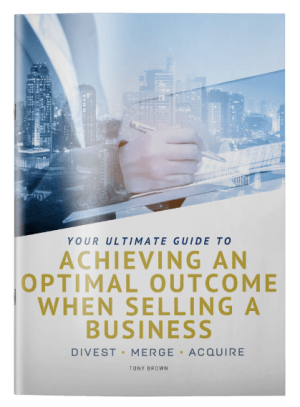How to structure business sale transactions to create bonus value for all parties
This model delivers spectacular outcomes when a business is sold.
Reduced risk, easier negotiation, smoother transition, optional team involvement, higher overall price and long-term value, enhanced growth and stronger teams …this model ticks all these boxes and more!
With the right approach and mechanisms and a little effort, tailoring up an optimal structure can deliver spectacular outcomes to all stakeholders where business owners are retiring.
Here are some basic elements and benefits:
Reducing risk
A Vendor can often retain a share of their business (eg 20%) for free. This is because of the added overall business value due to the reduced risk from the Purchaser’s perspective.
The amount or proportion retained should be high enough to mean something to both Purchaser and Vendor, but not so large as to be unduly risky to the Vendor, who is relinquishing absolute control to a relative outsider.
The Vendor can hold the ‘bonus’ 20% of the business as a shareholder without additional liability provided they do not become directors or officers.
This can be immensely comforting to the Purchaser, as the Vendor’s mid-term objectives are aligned with their own and that the Vendor will be available to assist at critical times.
This has been covered in more detail in a previous Divest Merge Acquire article: https://divestmergeacquire.com/articles//how-to-retain-20-equity-in-your-business-for-free/
Easier ‘Sell’ and smoother transition
A key risk in any transaction is the potential disruption caused by a change in ownership. Employees may become spooked and customers and suppliers may reassess their positions. If handled poorly, the perceived uncertainty can wreak havoc on a business and wreck the sale.
By retaining an interest in the business, Vendors can make the transaction an easier ‘sell’ to customers and employees. As the incumbent owner is retaining a share, they are effectively “bringing in an investor to take the business forward”. The clear message to customers and staff becomes “I’m not going anywhere for the time being, so it is business as usual apart from some positive changes.”
How and when you communicate the sale to your staff is also a key factor in reducing uncertainty. If poorly handled, key staff may jump ship, destroying business value for both the Purchaser and Vendor and possibly even sabotaging the sale.
Recommended approaches are outlined in Divest Merge Acquire’s article: http://divestmergeacquire.com/articles/who-do-you-tell-when-youre-going-to-sell/
Easier negotiation – Positions Purchaser and Vendor on the same side
If the Vendor is retaining a stake in the business, negotiations become instantly easier the moment the Purchaser realises they are negotiating with their future business partner. Why would you want to screw the last drop out of the deal when there is enough upside for everyone and you want the Vendor and their team to have a happy and lasting relationship with you? The parties become more flexible during the negotiation if they are proposing to become business partners for a period of time.
Vendor’s future role is rewarding and builds value
In many instances, retaining an ongoing interest in the business enables the Vendor to enjoy a phase out period and transition from ‘process to projects’, by being freed up from the day to day routine and admin etc, and being able to add value by undertaking training, business development and exploring other growth opportunities by using their extensive knowledge and perspective in the most valuable and rewarding ways.
Many former owners find this among their most rewarding times in their careers, as they get to do all the things they enjoy most, impart as much knowledge as possible and play a key role in seeing their business grow towards the future.
Contrast this to the difficulty some Vendors have when they continue to work in their old business but no longer have the status of ‘owner’ and instead are merely part timers or consultants. Retaining some ownership makes the transition much more palatable and allows them to retain some of their former status as owners.
Potential for more financial upside for the Vendor
The Vendor has the opportunity to continue to add value and share in the further success of the business. Depending on the Purchaser and their growth ambitions, the final settlement transaction can be far more lucrative than the Vendor would have ever been able to achieve if the sale had not been staged.
Including key managers provides further benefits
The Vendor equity retention model laid out above can easily be expanded to accommodate key managers.
Scenarios that have proved successful include where the Purchaser and Vendor each allocate (gift) a small % of their shares to willing key managers. The key managers may also have the ability to invest their own funds. In most instances, their shares have a special category without voting rights.
Divest Merge Acquire has previously covered some of the scenarios that can be built in to accommodate key managers: https://divestmergeacquire.com/other/how-to-help-your-team-to-think-and-act-like-owners/
The benefits of this are substantial and can make (and have made) the difference between a transaction proceeding or not.
Not only do the key employees have greater commitment and ‘buy in’ to the business transition and the future, but they are far less likely to leave, which reduces a substantial risk of them becoming competitors. It also brings them into the transaction as receiving consideration, thereby making any restraint built into their employment contracts far more likely to be enforceable.
If equity is not an option, a more watered down approach could involve employee retentions. Such retentions serve to keep key employees with the business for agreed periods, but with a significantly reduced ability to align employee objectives with those of the Business Owners. For more information on employee retentions, refer to https://divestmergeacquire.com/sale-preparation/keeping-key-staff-when-selling-a-business/
Retaining a share of the business vs a pure earn-outstructure
Retaining a share of the business for a period of time is generally superior to the simpler and more traditional approach involving only an earn-out. Under a pure earn-out structure, a portion of the sale price is contingent on future performance outcomes being met. The intention of an earn-out is primarily to transfer some or all of the risk to the Vendor. But there can be serious downsides and very few positives. The outcomes are usually no longer under the control of the Vendor, especially when control of the business has transferred to the Purchaser even before the earn-out period commences.
Earn-outs can also promote friction between Vendors and Purchasers, where Vendors are focussed on fixed short-term criteria and Purchasers are more concerned with long-term sustainability and growth. They also tend to limit the Purchaser’s ability to inject capital or make other changes during the earn-out period, as there is an element of custodianship and Vendor resistance to take into account.
Structure the arrangement for further investment and eventual exit of the Vendor’s remaining equity interest
In situations where both parties have agreed the Vendor should retain an equity interest, it is important to establish defined strategies and options for both parties in agreed timeframes.
The Shareholders agreement (SHA) should set out how to handle future transactions. Key considerations include:
Initial Transaction element
Purchaser initially acquires up to 80% of the business based on an agreed Enterprise Value (normally calculated according to a multiple of earnings (EBIT multiple).
Provide for further Capital Injections
Make provision for Vendor to either match the Purchaser’s capital injections or allow their % shareholding to dilute.
Prepare for exit by either party – Sunset provisions to resolve future outcomes
i. Drag along and tag along rights (“drag and tag”)
If the purchaser wants to sell while the vendor still holds a share, then the vendor can tag along, or can be dragged along to sell.
ii. Call Option after an agreed period
The purchaser can exercise a call Option to acquire the remaining shares at any time or within an agreed period, with the price set according to a pre-agreed multiple of earnings (EBIT).
If the business has gone well, then the price will be higher, but in theory the Purchaser should have the capacity to complete the acquisition due to the profit earned over the period.
iii. Put Option
The Vendor can exercise their Put Option after an agreed period, eg 3 years, requiring the Purchaser to buy their remaining shares according to the pre-agreed formula.
The exercise price is based on agreed multiple of EBIT.
Documentation
Many, but not all, lawyers can handle this. We are happy to recommend those who are familiar with this structure.
Conclusion
With a little effort, the right tools and advisors on board, it is very easy to achieve a smooth business transition, a higher quality outcome and provide ongoing benefits to all stakeholders.
It is no wonder that, after this model is explained to the parties, it is widely accepted and welcomed by Purchasers and intending Vendors alike.




